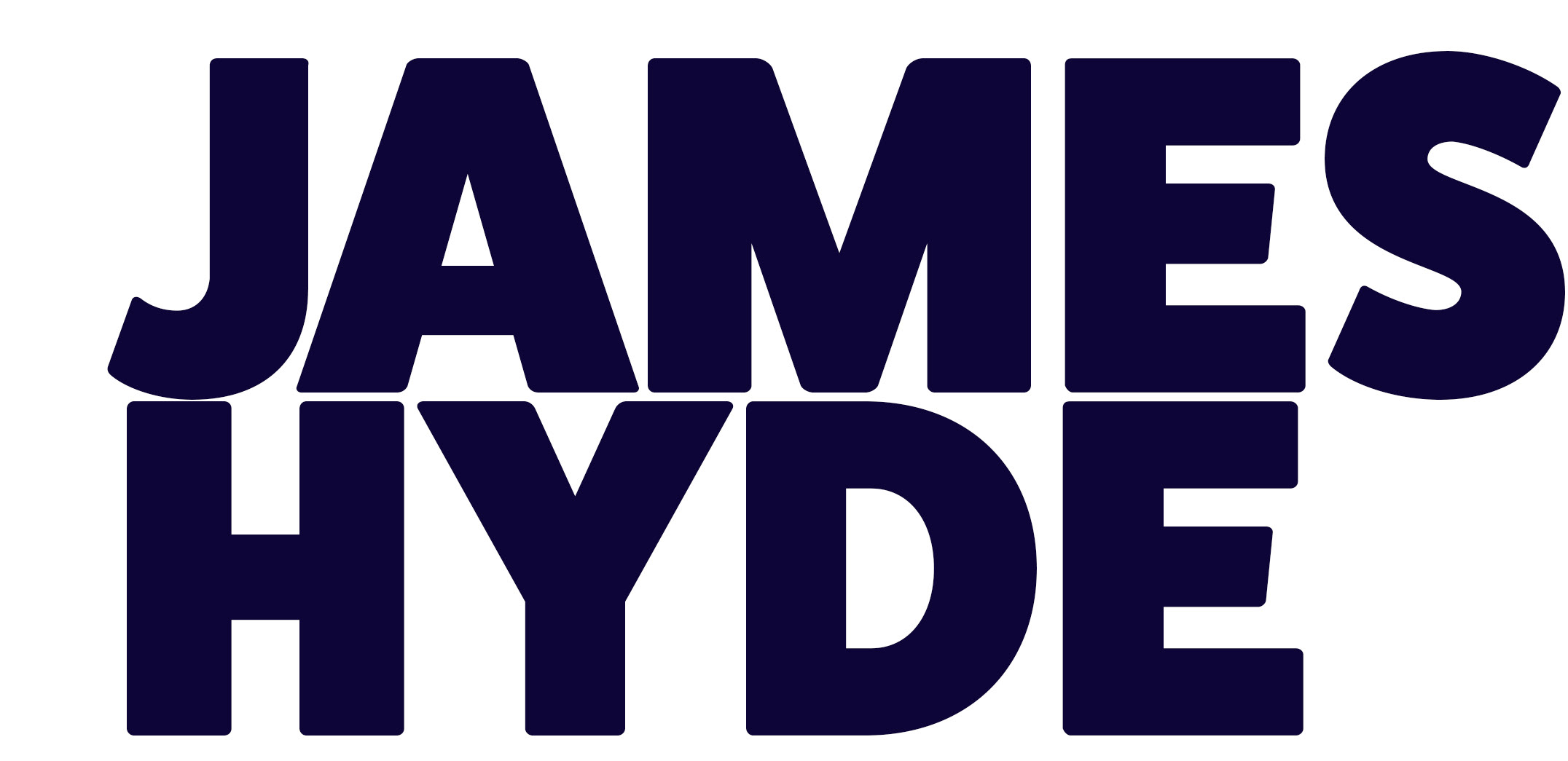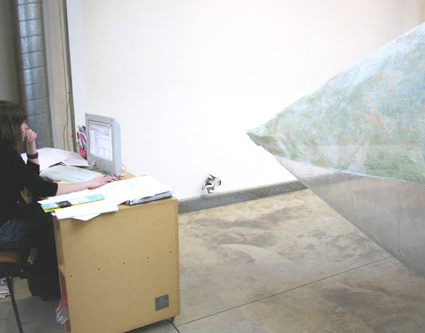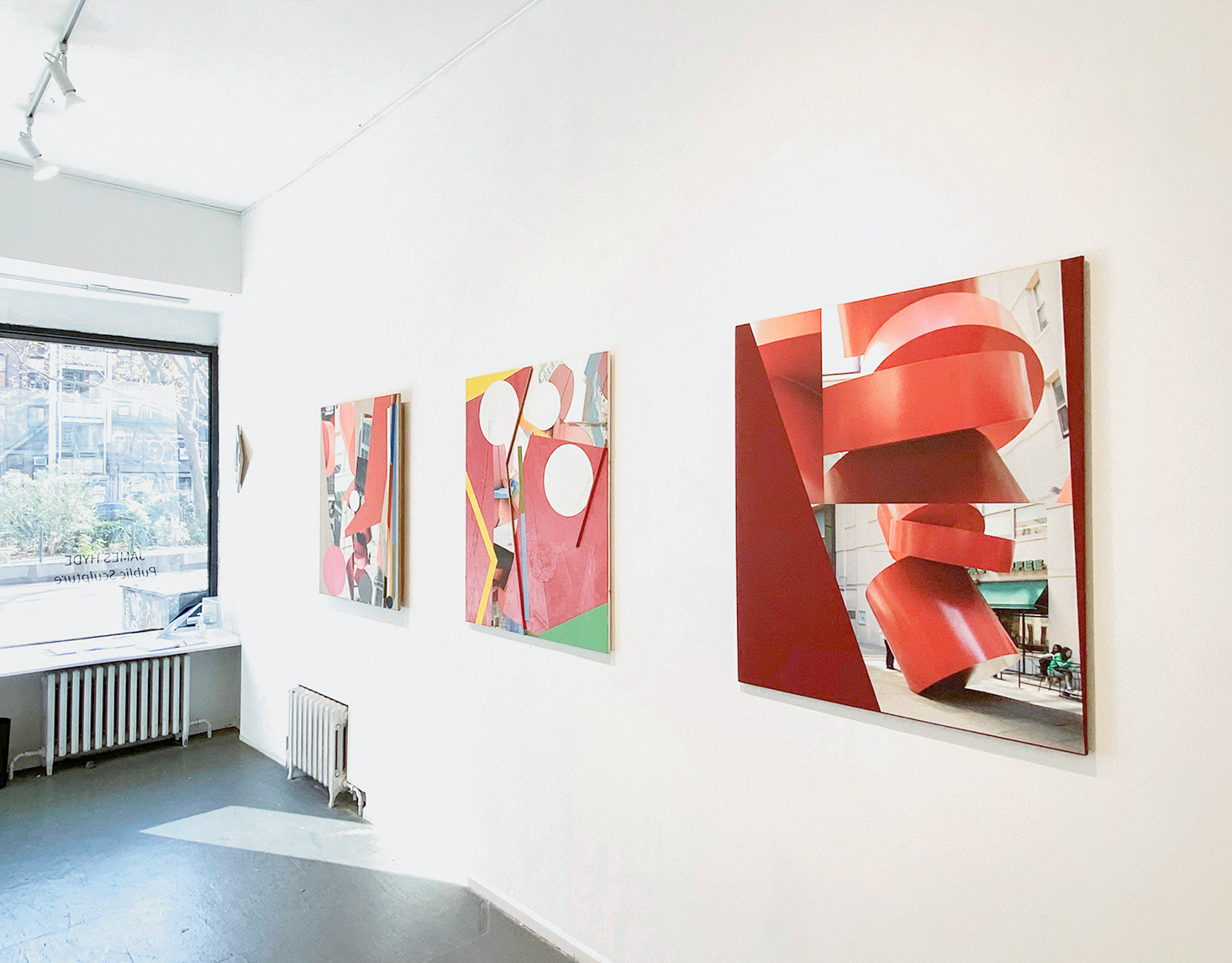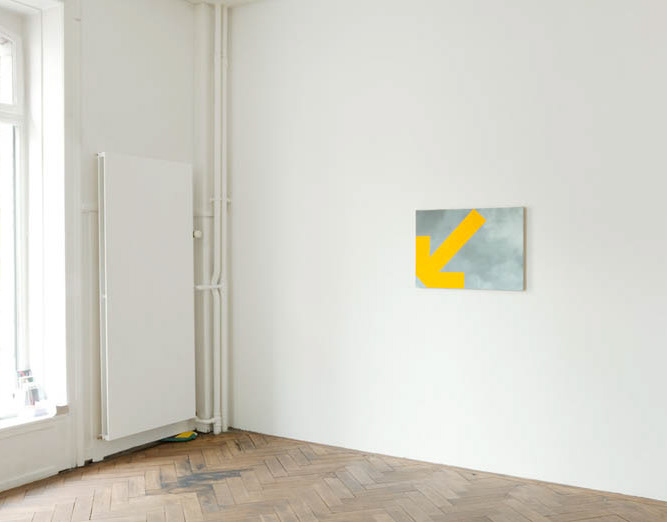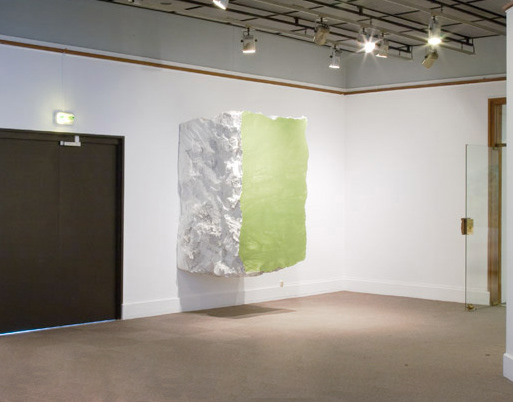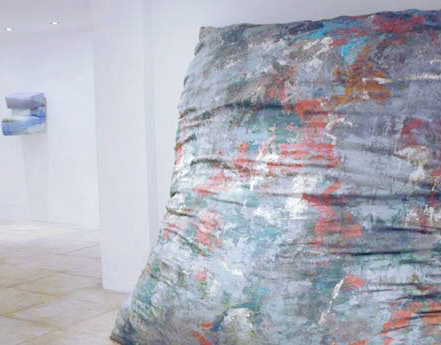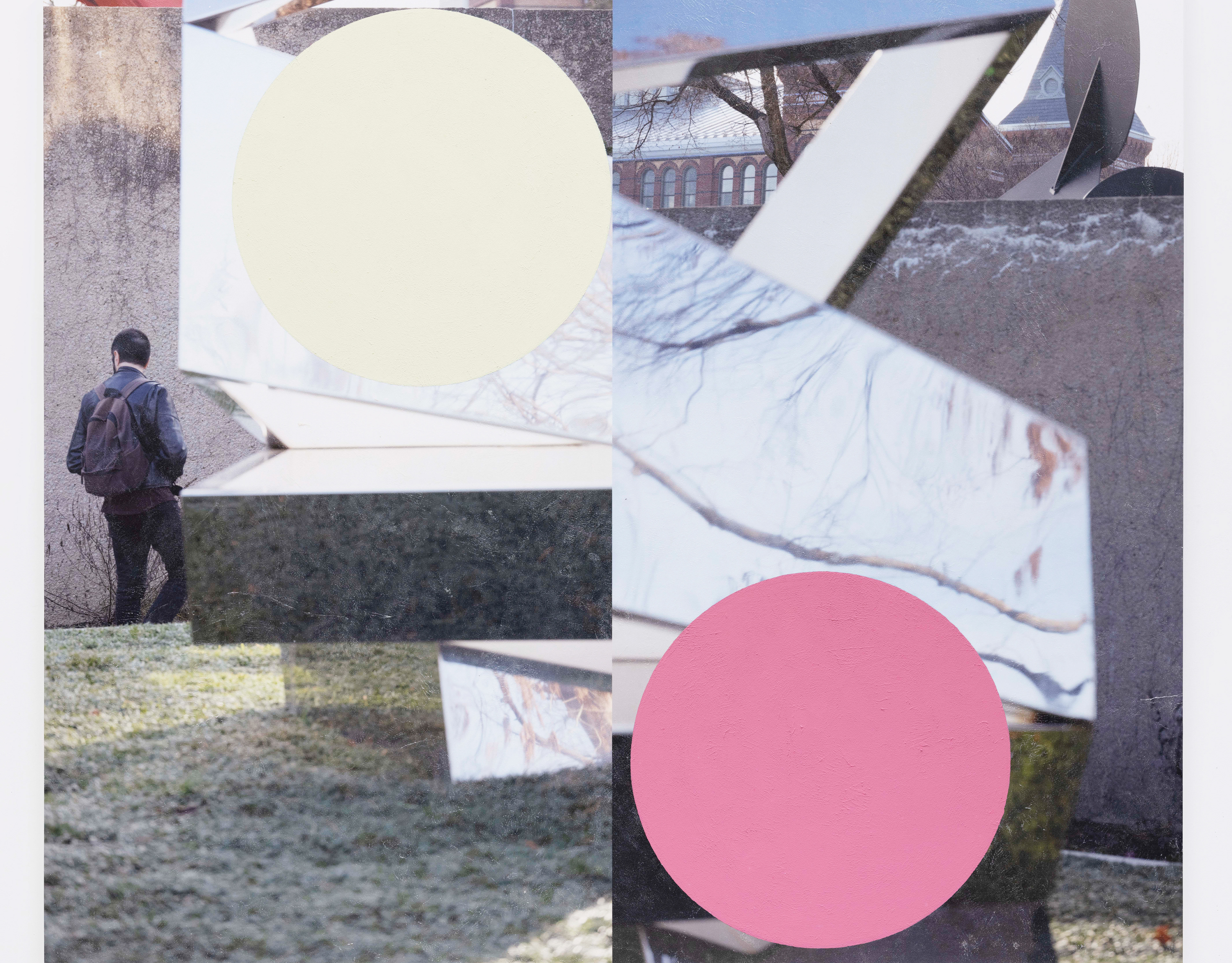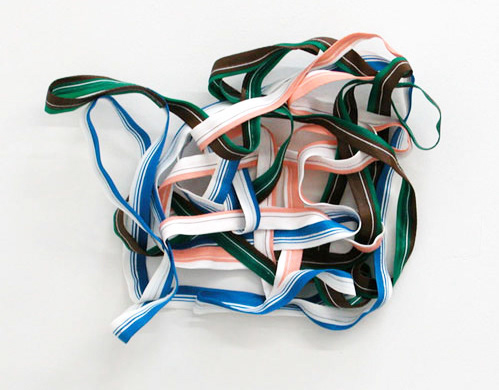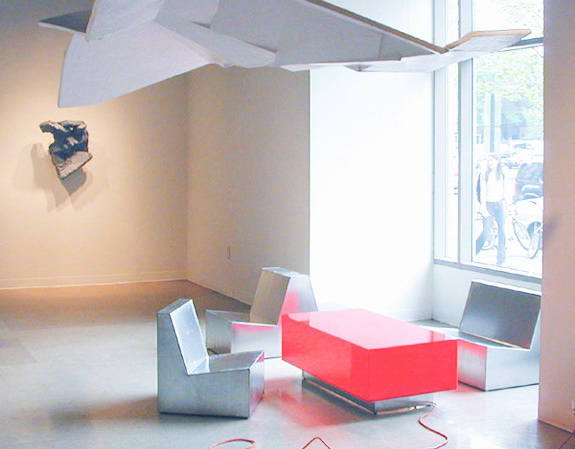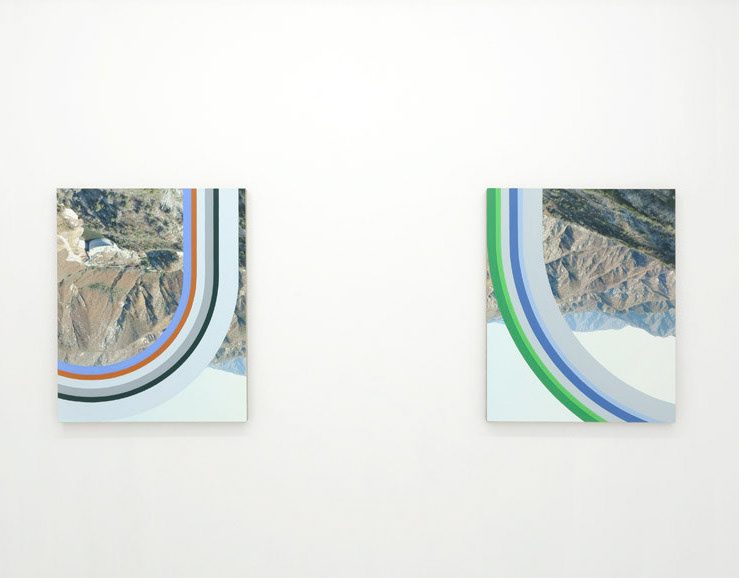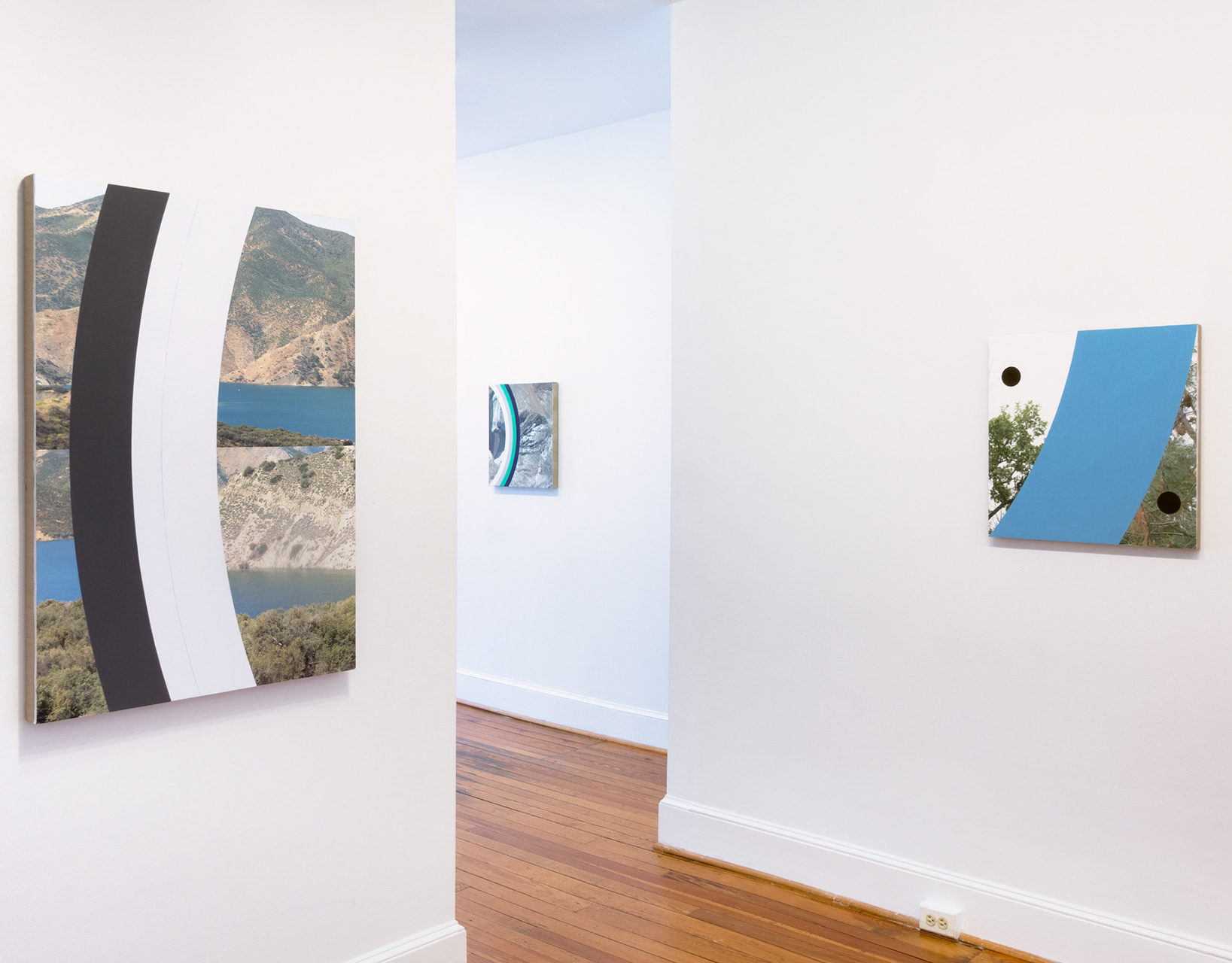(BLUE), 2013, acrylic on archival inkjet print on stretched linen, 56 1/4 x 87 1/2 inches
AWAY, 2011, acrylic and urethane paint on paper on archival inkjet print on stretched linen, 43 x 65 inches
LITTLE ROOF, 2011, acrylic on archival inkjet print, 11 1/4 x 8 inches
SHADES, 2009, acrylic on archival inkjet print on stretched linen, 68.5 x 43.5 inches
SWITCHBACK, 2012, acrylic and urthene paint on archival inkjet print on canvas, 43 x 65 inches
(Green) RESERVOIR, 2013, acrylic on archival inkjet print on stretched linen, 43 x 141 inches
DOWN FOR UP, 2011, acrylic on paper on archival inkjet print on stretched linen, 87 x 70 inches
THROUGH, 2013, acrylic and flashe on archival inkjet print on board, 21.5 x 16 inches
ELATE, 2013, acrylic on archival inkjet print on board, 21 3/8 x 14 7/8 inches
BUTTONED, 2012, acrylic and inkjet print on canvas, 21.25 x 10.25 inches
TEMPERATURE, 2011, acrylic and urethane paint on paper on archival inkjet print on panel, 42 x 42.5 inches
CROSSING, 2013, acrylic on archival inkjet print on stretched linen, 49.5 x 44 inches
PROPPED, 2011, acrylic paint on archival inkjet print on wood, 58 x 2.5 x 16 inches
PROPPED, 2011, acrylic paint on archival inkjet print on wood, 58 x 2.5 x 16 inches
